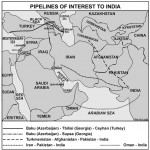The 16th summit of the eight-nation South Asian Regional Cooperation (SAARC) concluded on March 29 in Bhutanese capital Thimphu, vowing to plant “10 million trees over the next five years” so that there is a “green and happy South Asia”. It also resolved to boost trade cooperation among the member states and pledged to concentrate on the uplift of poverty stricken people in the region that is home to 1.5 billion humans – a fourth of the world population. Climate change and Socio-economic development were, thus, the two principal themes that the summit focused on.
Incidentally, the SAARC, launched in 1985, is now 25 years old. It began with seven countries of the Indian subcontinent – Bangladesh, Bhutan, India, Maldives, Nepal, Pakistan and Sri Lanka. Subsequently Afghanistan was added to the list.
Except with India, no SAARC nation shared border with another SAARC nation before Afghanistan joined the group (it shares the border with Pakistan). Politically, apart from India and Sri Lanka, no other SAARC country can boast of having strong democratic roots.
What has the SAARC achieved in the last 25 years? Whatever the officials may say, the fact remains that the record of the organisation has nothing concrete to boast of. In the inaugural conference of the SAARC in 1985, poverty eradication and improving the living standards through mutual cooperation were the main themes. If the same themes are being still talked about after 25 years, it only reflects the poor health of the organisation.
In each SAARC summit, the heads of the government have discussed burning issues confronting the region. The summit declarations have been marked by virtuous intentions and resolutions, but in concrete terms there have been hardly any sincere endeavour to implement them. For instance, various SAARC summits have addressed issues of regional concern such as poverty, food security, trafficking in women and children, terrorism and drugs, etc. But on each these issues, South Asia as a region continues to have a notorious distinction.
One of the success stories that SAARC officials highlight is the implementation of South Asia Free Trade Agreement (SAFTA). Intra-SAARC trade touched US $ 529 million in 2009, a considerable jump from the previous two years since SAFTA was implemented. Under SAFTA, it was agreed in principle to prune the sensitive lists by twenty per cent. SAARC Member States have also agreed to reduce tariffs on 30% of tariff lines outside the Sensitive Lists to Zero.
However, the fact remains that the countries of the region prefer bilateral mechanism to boost their trade to the SAFTA route. India, for instance, has preferential or free trade agreements with some SAARC countries on a bilateral basis. The intra-South Asian trade is almost 11 billion US dollars. But under SAFTA, which was implemented in 2006, the trade figure is only about 50 million dollars. Of course, one could argue that the figure has gone up from the 2006 mark of 11 million dollars. But the discrepancy between 11 billion dollars through bilateral trade and half a billion dollars under SAFTA tells the story. Besides, when one talks of the SAFTA figure of 50 million dollars, that is essentially the trade between India and Bangladesh.
It is not that only India and Pakistan have problems. India and Bangladesh have some issues to settle. Same is the case with Nepal and Bhutan. Pakistan and Afghanistan also do not lag behind on this score.
As far as Sri Lanka, Bhutan and with Nepal are concerned, India has a very open trading regime with them. India-Pakistan official trade is very poor, given Pakistan’s reluctance to implement SAFTA with India or offer the MFN status as a WTO member. It is only Bangladesh that has been able to take a lot of advantage of the opening up of trade controls under SAFTA. So, a large proportion of the increase in the volume of trade under SAFTA is accounted for by Bangladesh-India trade.
The fact that SAARC as a regional grouping has not lived up to expectations could be attributed mainly to the very nature of South Asia as a region. In South Asia, India overwhelmingly dominates over others in size, population and economy. Except with India, no SAARC nation shared border with another SAARC nation before Afghanistan joined the group (it shares the border with Pakistan). Politically, apart from India and Sri Lanka, no other SAARC country can boast of having strong democratic roots.
Ethnically, India has got communities which have strong civilisational and cultural affinities with a section of community in each of the other SAARC countries – Tamils in Sri Lanka, Bengalis in Bangladesh, Biharis and those from Uttar Pradesh with Madhesis in Nepal, North Indian Muslims with the so-called Mohajirs in Pakistan etc. As a result, the India-link becomes a political factor in almost all the SAARC countries. And above all, there is the legacy of partition of India in 1947, giving birth to a new country called Pakistan and subsequently Bangladesh. This legacy continues to bedevil the relations between India and Pakistan, SAARC’s two largest countries.




